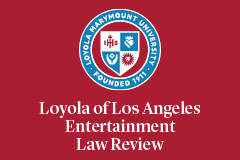Abstract
This article examines First Amendment issues raised by legislative efforts to regulate billboards that advertise adult-oriented enterprises and goods-namely, sexually oriented businesses (SOBs) and tobacco. As SOBs proliferate along highways in rural America, states are attempting to stop the only viable form of advertising SOBs have to attract the attention of passing motorists and truckers- highway-adjacent billboards. These "signs of sin" are the objects of censorship, even when they appear in text-only format. Likewise, in June 2009, President Obama signed into a new law giving the Secretary of Health and Human Services the power to create regulations targeting billboards that advertise tobacco products. Those rules are under attack by Big Tobacco in Commonwealth Brands, Inc. v. United States. This article: (a) establishes important foundational steps to a First Amendment inquiry into the censorship of billboards for adult stores and tobacco products; (b) analyzes the reasons why legislators target such content for censorship; and (c) then exposes the flaws with such legislative rationales, including what the author dubs the secondary secondary-effects doctrine. Along the way, the article addresses the commercial speech doctrine and explains how courts apply it to instances of billboard censorship. The article concludes by analyzing a pending piece of SOB-billboard legislation from Michigan and suggesting ways it might be re-drafted to survive constitutional scrutiny. Significantly, the article exposes other related issues, from the fiscal realities of challenging billboard laws to the cultural realities of life in a sex-saturated society.
Recommended Citation
Clay Calvert,
Freeway Porn & The Signs of Sign: Sex, Cigarettes and Censorship of Billboards,
30 Loy. L.A. Ent. L. Rev. 215
(2010).
Available at: https://digitalcommons.lmu.edu/elr/vol30/iss2/1


